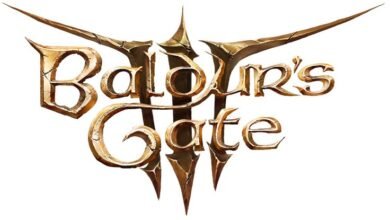Mastering the Mtg Metagame_ Win with Proven Strategies

Magic: The Gathering (MTG) is a complex and dynamic game that requires a deep understanding of the metagame to succeed. The mtg metagame, often referred to as “the game outside the game,” encompasses the strategies, deck archetypes, and prevailing trends that shape the competitive landscape of MTG. To excel in MTG, players must master essential strategies and tactics that will give them a competitive edge in any metagame.
Understanding the Metagame
Before delving into specific strategies, it’s crucial to understand the concept of the metagame in MTG. The metagame is a prediction of how players will make decisions based on the prevailing trends, popular deck archetypes, and anticipated strategies. By analyzing the metagame, players can anticipate the types of decks they are likely to face and tailor their strategies accordingly.
Deck Archetypes
In MTG, there are three primary deck archetypes: Aggro, Combo, and Control. Aggro decks focus on quickly overwhelming opponents with aggressive creatures and direct damage. Combo decks aim to assemble specific card combinations to achieve a game-winning effect. Control decks excel at disrupting opponents’ strategies and dominating the late game. Understanding these archetypes and their interactions is essential for navigating the metagame effectively.
Adapting to the Metagame
Adapting to the metagame requires players to stay informed about the prevailing deck archetypes and strategies. This involves researching tournament results, analyzing popular decklists, and staying updated on the latest developments in the MTG community. By staying ahead of the metagame, players can make informed decisions about deck selection, sideboard choices, and gameplay tactics.
Strategic Deck Building
Building a successful MTG deck involves strategic decision-making based on the metagame. Players must consider the strengths and weaknesses of different deck archetypes and tailor their deck to have favorable matchups against prevalent strategies. This may involve adjusting the deck’s composition, including specific cards in the sideboard, and fine-tuning the overall strategy to gain an edge in the metagame.
Sideboard Strategies
The sideboard is a critical component of MTG strategy, especially when adapting to the metagame. By carefully selecting cards for the sideboard, players can address specific weaknesses in their deck and counter prevalent strategies in the metagame. Understanding which cards to sideboard in and out based on the anticipated matchups is essential for success in competitive MTG play.
Meta-Analysis and Prediction
Successful players engage in meta-analysis to predict the expected trends in the metagame. By analyzing tournament results, community discussions, and card release announcements, players can make informed predictions about the future direction of the metagame. This enables them to proactively adjust their strategies and deck choices to stay ahead of the competition.
Flexibility and Versatility
Flexibility is a key attribute for mastering the MTG metagame. Adapting to shifting trends and unexpected strategies requires players to be versatile in their approach. This may involve adjusting deck configurations, incorporating new cards, or even transitioning to different deck archetypes to remain competitive in diverse metagame environments.
Continuous Improvement
Mastery of the MTG metagame is an ongoing process that demands continuous improvement. Players should actively seek feedback, analyze their performance, and stay open to learning from their experiences. By embracing a growth mindset and a commitment to improvement, players can refine their strategies and elevate their performance in the ever-evolving MTG metagame.
Frequently Asked Questions
What Is The Meta In Magic: The Gathering?
Meta in Magic: The Gathering refers to predicting opponent decisions based on personality or past choices.
What Is An Aggro Deck?
An aggro deck is a type of deck in Magic: The Gathering that focuses on being aggressive and dealing damage quickly. It typically includes low-cost creatures and spells that can quickly attack the opponent’s life total. Aggro decks aim to win the game before the opponent has a chance to set up their strategy.
What Are Midrange Decks?
Midrange decks control the early game and utilize efficient creatures to close the game in the mid to late stages. These decks offer a balance between aggression and control, making them versatile in various matchups.
What Are The Archetypes In Magic: The Gathering?
Archetypes in Magic: The Gathering include Aggro, Combo, and Control. These form the rock, paper, and scissors of the game. Aggro decks beat control by developing an advantage before control can find its relevant cards.
Conclusion
Mastering the MTG metagame is a multifaceted endeavor that requires a deep understanding of deck archetypes, strategic adaptation, and continuous improvement. By honing essential strategies and tactics, players can navigate the complexities of the metagame and position themselves for success in competitive MTG play. With a proactive approach to meta-analysis, strategic deck building, and versatile gameplay, players can gain a competitive edge and thrive in the dynamic world of Magic: The Gathering.





